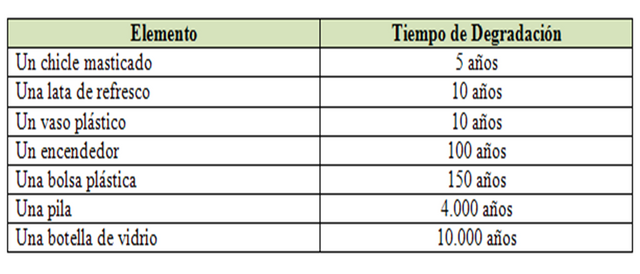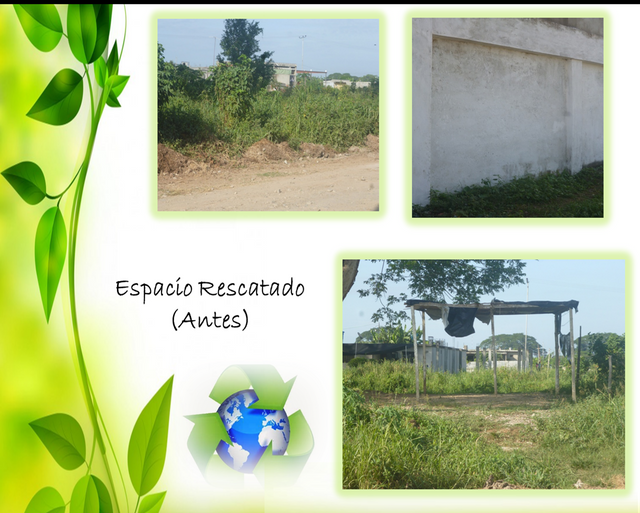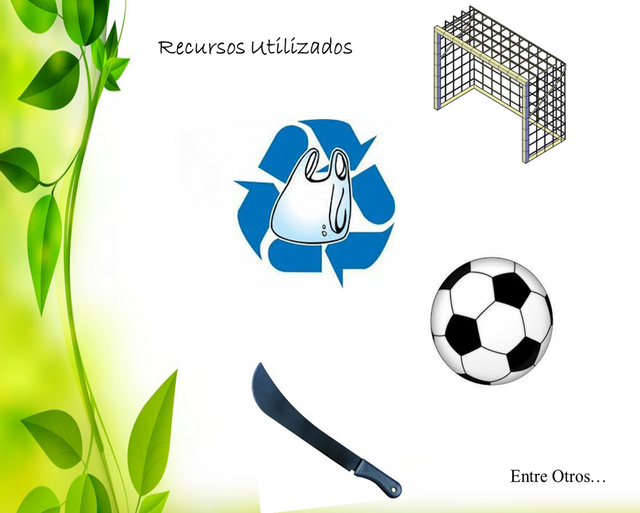Execution of socio-environmental project -community // Promoting environmental education

Introduction
I present this article before the community of steemit with the intention of educating about the environment, taking into consideration the execution of a socio-community project, where it will be embodied in a practical way with the implementation of strategies that help us to raise awareness about the care we must have before our community environment, all this applying the combination of a set of human, natural, financial and organizational resources.The Project was executed taking into account the following structuring: contextualization of the community space, research, diagnosis, planning, execution and evaluation; which account for the methodological stages of community social work.
The contextualization of the community space incorporates basic information that allows locating the community geographically, as well as important aspects related to the conditions of the infrastructure and services, as well as the social subjects that participate in community life. We refer directly to the Community of ASOCIEL, Sector Villa Trina, Santa Bárbara de Zulia Parish, Municipio Colón, State of Zulia, Venezuela, and their respective characteristics and descriptions.
Regarding the research process, the research methodology is dimensioned from the perspective of community development, which includes the design of the information collection instrument, the definition of the criteria for the selection of the informant subjects and the process of collection, processing and analysis of the information.
On the other hand, the social and environmental diagnosis is presented in a descriptive manner, which allows to account for the identified social problem, as well as the existing and potential resources and the action strategies proposed in order to implement social projects that can contribute to provide alternative solutions to the problems expressed by the community social subjects, to which they presented concern in the environmental area.
Another aspect that is part is planning, which addresses fundamental aspects of the planning and programming process, the elements and levels of planning, as well as defining the programming, phases and the elements that compose it. In this same section is the content and formulation of the project and its components. The reference to the execution process is addressed, the basic functions of the administration process and the experience that was experienced during the intervention process are described.
The last part of the work presents the evaluation of the project, where the process of social intervention is assessed and measured from the qualitative and quantitative perspective, the evaluation model used, as well; the results obtained and the experience of the work team are shown. Attachments are added that refer: Community Sketch, Diagnosis Format and Activity Report, Flyers, Triptychs and Final Evaluation Instrument.
Why apply the implementation of a socio-environmental project - community?
This project is proposed for the execution of a series of activities planned to introduce the environmental theme through theoretical-practical meetings where my students of integral development of the Experimental University South of the Lake (UNESUR) together with the community learn to recycle, reduce , reuse, preserve, maintain, the community spaces in the best of conditions.
The objective is to awaken curiosity about the multiple relationships of humans with their natural environment from the bond of mutual benefit between man and the environment.
The Project has a Comprehensive Environmental Awareness Program, where community spaces converge with the objective of empowering neighbors in the restoration of their community's environment, functioning as a meeting platform, dissemination of sustainable practices, culture and artistic expressions for the development of the human being as a natural being.
The initiative aims to train neighbors to be active actors in the reforestation of their community, caring for and helping and that everything is produced and managed by them.
Importance of introducing environmental education in the execution of the project
Environmental education is the dynamic, continuous and participatory process that seeks to awaken awareness in the population, acquiring knowledge and experience that allows it to identify itself with environmental issues, both at a general (global) level and at a specific level (where it lives). ; it seeks to identify the relations of interaction and independence that occur between the environment (environment) and man, as well as is concerned to promote a harmonious relationship between the natural environment and anthropogenic activities through sustainable development, in order to guarantee the sustainability and quality of current and future generations.
For example, when entering the community where the plan was executed, the first thing that was done was to educate the people explaining the time it takes for some elements to be degraded by nature. Here we present it in the following annexed table:

That is why it is of the utmost importance, that we become aware of what we buy, use and discard, in order to reduce the damage we do to our planet and the environment where we live.
Contextualization of the community space
This project was executed in the ASOCIEL sector, which is subdivided into other small sectors, including Villa Trina, which is the Main Sector of our Socio-Environmental Project.
The community has electric power, coming from the National Electric Corporation, as well as water, not being the best of the services, urban cleaning and wireless only telephone.
Presents in its main road, a road without asphalt or granzón, which becomes mainly moments of displeasure and fatigue for the community established in this town in the rainy moments, the road becomes totally mud, likewise the journey from the entrance to the communities is approximately 2 km, which must be traveled on foot, due to the conditions of the ground, there is no public transport directed there and there are very few cars that could cross the road.
The majority of formally constituted homes are not fully completed. They have few rooms, and a large number of people live there. There is a house of children's community help for the children of the Non-Profit Sectors, where they give free lunch and likewise without charge, they teach them how to read, write, add, subtract and sing.
It has a large space that was previously used as a playground and recreation space for the youth and children of the community.
All the houses were built with resistant material (blocks and cement)
At the far left of the Sector there is a pipe lined with dangerous animals, garbage and dead animals.
Not all houses have a sewer network, some have a septic tank, there is an absence of an internet network and cable television.
There is a lot of insecurity because the entrance is little traveled by vehicles.
It does not have an organized community council and every day the community grows and with it the needs of the same, for this reason it is necessary to educate and raise awareness among its inhabitants so that they can use their creative and productive capacity to succeed. As well as the physical spaces they possess. (To play sports, build schools.
Objectives that are pursued with the project
Promote the implementation and execution of the Project "Sow ideas, give smiles, Harvest lives", directed to the Sector Asociel, specifically Villa Trina, located in Santa Bárbara de Zulia, Municipality of Colón del Estado Zulia-Venezuela, whose main objective is to generate awareness in the community through environmental education.
All this as mentioned above, through the application of strategies, services and equipment to support recreational, social, cultural and educational activities and practices, with the aim that the inhabitants of the sector identify with the environment that surrounds them and be guarantors of its conservation.
Concrete activities that were executed in the sector
Environmental Awareness Talks: Talks were given speaking to the community about the importance of taking care of the environment and the socio-community environment.
Rescue of the court and recreation area: These spaces were rescued with the purpose of not only correcting damages, but also to be used for community and recreational sports activities, in the same way we also have the rescue of these spaces with the aim of keeping young people away from drugs, vices and endless activities that should not be carried out by young people and wanting to create a picture in which the family complements more in sharing and values.
Creation of a mural as an environmental campaign: Its purpose is to make known and to remain through the written time and animations that give understanding to children, youth, parents or representatives, community in general the preservation of the environment and how can they do it without having to go to the image instead.
Donation of a soccer ball and archeries for the court, also donated clothes, shoes, among others: Thanks to the valuable collaboration of some private companies, these young people will nowadays have a clean place and with necessary materials to recreate in this community.
Make the understanding of people who not only reuse, disposable materials but also clothes, shoes and others.
Physical location and territorial scope
The Asociel II Community is made up of the Villa Trina, Asociel, José Evaristo Labrador II, Valle Sol, Rafael Urdaneta, Villa Hermosa, Villa Luz, Vista Hermosa, Community Housing II (OCUV II), Asociel II Sectors. It is located in Santa Bárbara del Zulia at Km 2, Carretera Vía Santa Bárbara - El Vigía a few meters behind the Farmacia Farmatodo approximately 200 meters away, in the Santa Bárbara Parish, on the east side of the City, Municipality of Colón, State Zulia It is located in the South Zone of Lake Maracaibo, in Western Venezuela.
ASOCIEL II sector located satelitely, in Santa Bárbara del Zulia:
What methodology was used to apply the action plan in the community?
Research is a process that we carry out in this community through the application of the scientific method, knowledge and discovery, which led us to obtain appreciable and reliable information to conceive, check, correct or use knowledge.
We achieve this effect and we did it in a clear, efficient and precise way, it is unavoidable to use a prototype of research, the research is very tied to the individuals of the studied society, this has a series of ways to acquire the programmed objective or to obtain the required information. We include techniques of observation, study, understanding, analysis, technique of possibilities, applicability and acceptance of the environment and possible solutions for the solution of the problem diagnosed.
We apply the methodology of strategic planning, in the form of creation, systematization and coordination of ideas to be reflected in the field, through teamwork, mutual intervention, collaboration in all aspects, among others.
Conclusion
Through environmental education, the favorable conditions are created to generate a participatory process in which it seeks to integrate and make humanity aware of the damage we are doing to our planet, while raising awareness about the common activities that we carry out on a daily basis and that we must reduce like: do not throw garbage, recycle and do not burn, we can contribute to improve our environment and ensure a clean environment for our children.
It is necessary that the individual has absolute clarity in relation to environmental education, conceived as an educational process interested in the formation of man so that he obtains a series of knowledge, principles and positive values, towards natural resources; and with this, I managed to change my attitude and thus be able to solve the environmental difficulties, for which all the capacities to apply environmental education programs based on ecological, political, economic, social, and institutional factors must be exploited, promoting this participation with a sense of responsibility in the search for solutions to the environmental problems of the ecosystems of each community; according to the own resources and with the determined cooperation of those populations. This idea emphasizes the sense of belonging of each individual, with respect to the natural and social environment based on the cultural values of the region where they live.
To find a life in harmony with the environment, the first thing that must be done is to obtain a population aware of its belonging to the whole that surrounds it. People must be educated from childhood to learn the necessary care to rationalize the resources of the planet, the key to improving our environment is from education both at home and in schools and universities.
Images



Congratulations @sandracarrascal! You have completed some achievement on Steemit and have been rewarded with new badge(s) :
Click on the badge to view your Board of Honor.
If you no longer want to receive notifications, reply to this comment with the word
STOP